Web designing has several moving parts, from prototyping to researching, designing, and even client review and feedback. So, web designers sign up for a CRM tool for several reasons:
- Centralize client communication
- Manage leads and track project progress
- Identify upselling opportunities
- Automate repetitive tasks
With a plethora of CRM solutions out there, identifying a CRM tool that meets your business needs can be a hassle.
In this blog post, we review the best CRM tools for web designers to streamline client management and boost operational efficiency.
At the end of this blog post, you will be able to do the following:
- Understand the challenges web designers face and how a specialized CRM software solves them.
- Identify a CRM software that meets your needs, whether you are a freelance web designer, an agency, or a small business.
- Integrate a CRM tool into your web design workflow.
- Identify key features of CRM for web designers.
Ready? Let’s go.
Table of Contents
Why Web Designers Need a Specialized CRM Tool
Every web designer has scaling in mind. To scale, you must improve operational efficiency and project management.
This can be achieved by automating repetitive tasks and improving client retention by managing clients better because let us face it, more clients means more project specifics, expectations, and deadlines.
Before we look into the tools, let us look at the challenges web designers face and how a CRM tool solves them.
Project management and organization
Several components are involved in website design, from researching, visualizing, developing, designing, and testing to communicating with clients and updating their preferences.
Keeping track of all these moving parts for multiple clients, including timelines and project specifics, can be very challenging.
How a CRM tool solves this challenge
Most CRM software have project management features, enabling you to store and organize project-related documents like UX design mockups, client briefs, and contracts. This helps you easily track client projects’ progress, review past interactions, and set deadlines to meet project milestones.
Client communication
Juggling communication with multiple clients can become overwhelming, especially if there are multiple platforms for communication.
This can lead to missing out on specific project details, repeating past mistakes, or even a communication gap.
How a CRM tool solves this challenge
CRM tools enable centralized communication to help manage client interactions and store messages.
Streamlined communication also allows you to automate follow-up communication based on the context of the existing interaction with the client, enabling you to adhere to project guidelines, respond on time, and simplify client communication.
Lead management
It is one thing to generate leads and yet another to manage or nurture them until they opt in for your web design services. For solo web designers, manually managing leads is heavily time-consuming, counterproductive, and prone to human errors that can harm your business brand.
How a CRM tool solves this challenge
CRM tools have lead management features that store lead information in a single database, making it easy to access and manage.
Additionally, they have web capture forms that allow web visitors to subscribe to your email list quickly. Then, you can categorize leads based on various criteria, such as project requirements, industry, or the stage in the sales funnel.
Task automation
Administrative tasks, such as billing and client updates, can be time-consuming and prone to errors.
Finding the balance between maintaining a personalized touch in client interactions and devoting time to execute critical tasks can be challenging for web designers.
How a CRM tool solves this challenge
CRM tools have automation features that provide a personalized touch for routine tasks, such as sending invoices or follow-up emails.
This way, you save valuable time for critical work and reduce the risk of oversights directly impacting customer satisfaction.
Client retention and upselling
Web designers grapple with the dual challenges of retaining existing clients and identifying opportunities for upselling additional services.
How a CRM tool solves this challenge
CRM systems have features that enable you to identify upselling opportunities based on client behavior and project history.
This way, you increase the lifetime value of each client. Additionally, by organizing client data tracking interactions using a CRM solution, you get data-driven insights into client preferences, enabling you to personalize communication, strengthen client relationships, and improve retention.
Read also: 10 Free Marketing Tools Every Freelancer Will Love
Key Features Web Designers Look For in a CRM Tool
When it comes to CRM solutions for web designers, not all features rank equally.
Some features are more crucial to your web design business compared to others. So, rather than subscribe to a CRM tool because of the bells and whistles, ensure the tools have the critical features required to improve your business operation.
Here are the key features designers look out for before subscribing to CRM software.
Project management
A CRM software like EngageBay has project management features like team collaboration tools, project tracker, calendar integration, and task management tools, which enable you to collaborate with your team and manage multiple aspects of your web design projects within a single platform.
This eliminates inefficiencies from using multiple tools.
Task and time management
Features like appointment scheduling, calendar management, time tracker, and project timers are necessary to schedule client meetings and track time spent on projects.
This helps you meet up with deadlines, record work hours for appropriate billing, block out time for specific tasks or appointments, and manage time better overall.
Customizable workflow
Create processes that align with specific projects because every web design project is unique.
The customizable workflow feature allows you to adapt your project management processes and create tailored client experiences.
Analytics and reporting
Evaluate the success of your projects and improve your work process over time by monitoring project performance metrics such as the time taken to complete a project, the communication flow between you and clients, the rate of conversion, and adherence to budget.
Client portals
Interact with your clients, access project-related information, and provide feedback on existing projects.
The client portal provides the space to communicate seamlessly with clients and receive crucial information about a web design project.
Read also: Maximize Your Sales: Top 12 Lead Scoring Tools Reviewed
9 CRM Tools for Web Designers to Manage Clients and Projects
Here are nine customer relationship management solutions for your web design business.
We considered pricing, user reviews, available features, and ratings. Let’s begin with a comprehensive table to give you a snapshot of each tool.
| CRM software | Starting price | Free plan | Free trial | G2 rating |
| EnagageBay | $13.79/mo | ✔ | ✔ | 9.2 |
| HubSpot | $20/mo | ✔ | ✔ | 8.8 |
| Salesforce | $25/mo | ✔ | ✔ | 8.6 |
| Zoho CRM | $12/mo | ✔ | ✔ | 8.2 |
| Insightly | $29/mo | ✔ | ✔ | 8.4 |
| HoneyBook | $8/mo | ✗ | ✔ | 9.0 |
| Bonsai | $21/mo | ✔ | ✔ | 8.4 |
| Freshsales by Freshworks | $15/mo | ✔ | ✔ | 9.0 |
| 17hats | $15/mo | ✔ | ✔ | 8.8 |
Let’s take a detailed look at each tool.
1. EngageBay
The first tool on this list is EngageBay.
EngageBay is loved particularly by over 80,000+ clients because it provides a comprehensive CRM, sales, and marketing solution. This means you do not have to juggle between multiple tools.
As a web designer, EngageBay enables you to handle all aspects of your web design with features like project management, lead management, team collaboration, contact management, time management, reporting, and analytics from inception to finish.
Additionally, EngageBay provides a 360-degree holistic view of customer information, which helps you understand your client’s behavior and personalize individual communication. With EngageBay, create and manage projects, assign tasks to your teammates, track the progress of your project, and set deadlines.
With its live chat feature, you can also ask and answer questions in real time to gather data that will help you meet clients’ expectations.
It doesn’t end there.
Build a customizable workflow that streamlines and automates client interactions from lead generation to client onboarding and post-project follow-up. Its integration capability enables you to integrate tools like Mailgun, Zoom, Trello, and LinkedIn.
All these make EngageBay CRM a top choice for web designers.
Key features
- Deal management: Streamline your sales processes, add deals, manage pipelines, and track the progress as you go. Deal management also lets you track client engagement progress through the deal pipeline.
- Sales pipeline management: Create a customized sales pipeline with stages that align with your unique sales process. The reporting and analytics feature of the sales pipeline management helps you get reports on deal value and conversion rates.
- Intelligent automation: Simplify redundant and mundane tasks using the smart workflow automation feature. You can also create workflows based on various actions and conditions and worry less about the wonders they will do for you.
Pricing
- Free: $0/month, billed annually
- Basic: $13.79/month, billed annually
- Growth: $59.79/month, billed annually
- Pro: $110.39/month, billed annually
2. HubSpot
HubSpot is a customer-oriented platform with all the software integrations and resources you need to connect your marketing, content management, customer service, and sales.
You can automate project-related workflows with HubSpot and manage and organize project-related files to ensure easy access to specific project details.
HubSpot also offers contact management, which allows you to store and organize client information, allowing for streamlined, personalized communication.
Key features
- List segmentation: Create and categorize your client into precise sub-units based on parameters like project types, industry, location, or level of engagement. Segmentation allows for streamlined, tailored communication between you and your client towards satisfaction and retention.
- Quote software: Create and send sales quotes, collect electronic signatures, and receive payments from where you manage your deals. Quotes software also helps you to populate quotes with information from your HubSpot smart CRM automatically.
Pricing
- Free: $0/month, billed annually
- Starter: $20/month, billed annually
- Professional: $1,600/month, billed annually
- Enterprise: $5,000/month, billed annually
3. Salesforce
Salesforce CRM has been at the game since 1999.
With over 150,000 companies and businesses onboard, the cloud-based platform is ideal for web design agencies with scaling in mind. This means businesses, primarily large web design agencies, can use the software and get the most out of its best-in-class apps beyond CRM to support every aspect of their web design business.
Salesforce CRM also offers customization through workflows, dashboards, and customizable fields, allowing businesses to tailor the system to suit their web design needs.
Key features
- Contact management: Efficiently organize, track, and manage client relationships with a centralized database containing all your clients’ information, such as phone numbers, email addresses, and company details.
- Process automation: Streamline your client management workflow through automated lead capturing, lead nurturing workflows, and project onboarding to improve efficiency. This feature can also help designers automate task assignments based on predefined criteria to ensure they are completed on time.
- Quoting and contracting: Create professional quotes containing project estimates and save time while ensuring consistency in price. This feature also helps you to manage your contracts and agreements with clients.
Pricing
- Starter Suite: $25/month, billed annually
- Professional: $80/month, billed annually
- Enterprise: $165/month, billed annually
- Unlimited: $330/month, billed annually
- Unlimited+: $500/month, billed annually
4. Zoho CRM
Zoho CRM is a great CRM software known for its affordability, making it a go-to option for freelancer web designers.
With Zoho CRM, you can seamlessly integrate with Zoho’s suite of products like Zoho Projects, Zoho Invoice, Zoho Mail, and Zoho Books. This lets you streamline your business processes by connecting project tracking, invoicing, and email communication.
With over 250,000+ businesses, Zoho CRM boasts of 24/7 customer support that is secure and reliable.
Key features
- Project management: Organize and manage design tasks effectively, track the progress of design projects, and set milestones. This feature also allows you to monitor the timeline of design projects and keep an eye on deliverables to ensure every aspect is completed on time.
- Lead management: Capture leads, automate lead scoring, identify leads that will convert, and follow up on detailed contact information. This feature will also help you to analyze and track critical information about leads.
- Auto-responders: Set up automatic replies and follow-ups to enhance customer communication. You can also set it to notify your clients automatically when a project milestone is met.
Pricing
- Standard: $12/month, billed annually
- Professional: $20/month, billed annually
- Enterprise: $35/month, billed annually
- Ultimate: $45/month, billed annually
5. Insightly
Insightly earns a place on our list because it is scalable, affordable, and an easy-to-adopt CRM.
With its project management feature, web designers can manage their pre- and post-sales work by monitoring milestones and pipelines and using Kanban view. The feature also allows you to assign deadlines and monitor progress easily.
Insightly is trusted by over 1.5 million users, and this amount of traction proves that you will easily find everything (custom fields, workflows, page layouts, processes, and more) you need for client management.
Key features
- Task management: Manage the creation of tasks like reminders, to-do lists, and call logs. Assign unique task sequences and events to leads, opportunities, projects, and organizations for better work efficiency.
- Relationship linking: Understand your prospects and customers better. This feature will help you as a web designer to have more effective conversations with links between contacts and organizations.
- Configurable, customizable reports: Create flexible reports that meet your web design needs. This feature also helps you to schedule reports to run at any time and send them to anyone with information about significant changes to the project data.
Pricing
- Plus: $29/month, billed annually
- Professional: $49/month, billed annually
- Enterprise: $99/month, billed annually
6. HoneyBook
HoneyBook is an all-in-one platform with all you want in one place, including invoicing, contracts, automation, and online scheduling.
With its online payment feature, small businesses have booked over $7 billion in business, which is good because the feature comes with a frictionless experience.
With the integration of finance elements into the system, you can easily track expenses, monitor revenues and track income, review online payments, create and send invoices, and send reminders for overdue payments.
In general, HoneyBook, trusted by 100,000+ businesses, streamlines your business processes and saves you the stress of doing manual tasks that consume time.
Key features
- HoneyBook AI: Boost your productivity and work smarter with tools like AI composer, AI-generated replies, and AI image studio. This feature helps freelancers scale through lead capture, replying to texts, and sending proposals with images that speak of professionalism.
- Automation: Create custom automation to match your web design process. Send emails and files and have workflows triggered based on client behaviors, dates, and other criteria. This feature also allows you to respond to inquiries automatically without lifting a finger.
Pricing
- Starter: $8/month, billed annually
- Essentials: $16/month, billed annually
- Premium: $33/month, billed annually
7. Bonsai
Bonsai is a business management tool that combines CRM, time tracking, project management, and invoicing in one place.
The CRM system is designed to keep clients and projects organized. With over 500,000 customers, Bonsai has tailored its time-tracking feature to enable you to track the time spent on a project.
Tracking the time also shows how many hours are yet to be billed. This feature gives you real-time reports on how you spend your time.
The contract management feature allows you to create and send contracts with electronic signature integration and keep track of contract status with clients, making it possible for you to come off as a professional on their A-game.
Key features
- Scheduling: Conveniently manage your appointments, meetings, and project milestones. This scheduling feature also synchronizes with the designer’s calendar, making sure that you, as a web designer, are aware of your appointments with clients.
- Invoicing: Create beautiful invoices in seconds, set up global payments, and send automatic reminders to help you get paid faster. This feature also comes with built-in templates on the software, canceling out the need and the stress of creating one from scratch.
- Proposal creation: Create branded, personalized, and professional proposals to win more projects for higher fees within minutes. It saves time by providing flexible templates that aid, secure your new work, and ensure you get paid.
Pricing
- Starter: $21/month, billed annually
- Professional: $32/month, billed annually
- Business: $66/month, billed annually
8. Freshsales by Freshworks
Freshsales by Freshworks is a cutting-edge CRM solution with a user-friendly interface and robust client management and project tracking capabilities.
The AI-based lead scoring feature helps you to identify and target leads with customized scoring rules that enable you to focus on the best leads.
The user-friendly nature of the system makes it accessible to users of all levels of technical expertise, minimizing the learning curve and enabling them to focus on their core tasks.
Key features
- Kanban view for contacts, accounts, and deals: Manage and organize your contact, accounts, and deal records in a Kanban view to get key information at a glance. The visual layout of the feature makes it easy for web designers to quickly get the status of their clients or projects at a glance.
- AI-powered deal insights & next best action: Freshsales leverages artificial intelligence (Freddy) to analyze the data of a deal and gain a deeper understanding of factors like engagement metrics and historical data. This feature also helps you identify the next best action for your clients based on the recommendations from AI analysis — making Freshsales one of the best CRM software for web designers.
Pricing
- Free: $0/month, billed annually
- Growth: $15/month, billed annually
- Pro: $39/month, billed annually
- Enterprise: $69/month, billed annually
9. 17hats
17hats stands out as cloud-based management software that caters to and exists to help service-driven small business owners succeed.
With 17hats, users can easily manage their relationships with clients by using the software’s CRM, making it easy to track leads and manage contracts and ongoing communication with clients.
The all-in-one capability of the software also includes an integrated approach that helps you as a web designer to stay on track with clients’ projects.
Small businesses around the world excel with 17hats, and it is trusted by 25,000 companies that love its automation and calendar integration.
Key features
- Client portal: Allow clients to log in and access information about the project milestones they have committed to you. This feature also allowed for document sharing between you and your client, serving as a good communication channel where they can ask you questions about certain stages of your web design flow.
- Invoices and documents: Create, send, and store invoices in your templates. This feature allows you to send invoices to your clients for payments, and you can also. The document confirmation feature allows you to send a thank you email and grants clients access to their projects upon completion.
- Reporting: Keep track of your income and see your best clients and the value they have added to the business based on the data obtained from past projects. This feature also lets you see exactly which of your revenue is the most profitable.
Pricing
- Essentials: $15/month, billed annually
- Standard: $30/month, billed annually
- Premier: $60/month, billed annually
Read also: 15 Email CRM Software for Pro-Level Marketing in 2024
Choosing the Right CRM for Your Web Design Business
Now that we have looked at nine CRM solutions, it’s important to note that each tool has its own uses and will suit different needs and teams. Here are the top factors to consider before deciding what tool to use.
1. Understand your needs and requirements
First things first, define your needs.
If you are a small web design agency or a start-up, your primary consideration may be CRM software that is easy to use and comes at a fair price. More advanced teams may look for more advanced features and automation capabilities.
2. Consider the features and the UI/UX
Every CRM tool has its selling point, but you mustn’t fall for it.
The main deal is what you see and experience using the software. Focus on the features that align entirely with your business needs. A product’s usability is crucial, as CRM tools that are not intuitive or user-friendly will not help you and your team maximize the software’s features.
3. Keep pricing in mind
For many web designers and freelancers, pricing can be a major deal breaker.
Some tools have extensive features at a higher price, and others may be more affordable with the basic features you need. Although CRM is still an investment in your business growth, you’ll want to consider a tool with the required features at a price you can afford.
EngageBay offers a flexible pricing structure that enables you to start from the basics and add more features as the need arises for a slightly higher price.
4. Check out the integration capabilities
To help your business better, your CRM should be one that can play nicely with other tools in your work stack.
The chosen CRM should be an absolute source of truth for all your data and customer interactions. Integrating with tools like Google Drive allows you to easily push and pull customer data from one end to another without wasting time.
Read also: 5 CRM Software for Interior Designers to Elevate Business Growth
5. See if the software is scalable
Now, if you are a small web design agency that has walked through the first four steps, this one is something you should consider.
You should choose a CRM that can grow with your business and handle more data and complex procedures as your web design career flourishes.
6. Take into account the security and data privacy
A CRM without robust security measures is like a fine house without good roofing.
When the rain or wind comes, the properties in the house will be affected.
You should go for a CRM with good security features like encryption, user permissions, and regular data backups to safeguard your data, all in compliance with data safety regulations.
Read also: 21 Email Newsletter Software: What’s Hot in 2024?
Integrating CRM Into Your Existing Web Design Workflow
As a web designer, you already have a familiar workflow.
However, with the addition of a reliable CRM, you will need strategies that will help you seamlessly integrate your CRM into your existing workflow.
Here are a few strategies that will help your integration procedure.
1. Identify key touchpoints
Before integrating CRM into your existing workflow, you must determine key touchpoints where the CRM system can add sufficient value to your web design workflow.
The touchpoints may include contact pages, lead generation forms, project inquiries, and client onboarding.
2. Research and set up the right software
With the identified touchpoints, you can look out for a tool with the key functionalities you desire at a cost-effective rate.
You should evaluate the cost and arrive at the final decision by comparing different tools that meet the mark to see how well they stand as your solution for streamlined client management.
Using EngageBay, let me show you how to integrate a CRM into your existing web design workflow.
- Generally, the first step in the initial set-up stage is to sign up and choose a plan that suits your needs and budget.
- Maximize EngageBay’s import tools to bring your existing data onto the platform after signing up. This step is followed by configuring your communication preferences and project templates to match what you already have in your workflow.
- Explore integrations like Figma, Dropbox, and Google Drive to find suitable file-sharing and collaboration connections. If direct integration is unavailable, use Zapier (a third-party automation platform) to connect EngageBay with your preferred design tools.
- Utilize project creation tools to track progress and assign tasks to your team members with the built-in time-tracking feature.
- Centralize client communication, including emails, live chat, and support tickets directly within the software for better organization and context.
- Build an automated workflow for lead nurturing, follow-ups, and project milestones. With this, you will not have to do repetitive tasks manually.
- Do not try to change everything at once. Start small with key integrations and features that will impact your workflow most.
3. Measure the success of your integration
The integration process may not be finalized immediately and can take a while.
However, this allows you to evaluate and compare metrics even as the software runs. Monitor client management and project completion time before and after integration to identify improvements.
Read also: Hidden Gems: The Best Random Website Generators to Explore the Web
Best practices for getting the most out of your CRM system
1. Define your goals
Before implementing, define your goals, select the right system, and prepare your data.
Having a goal keeps your needs organized and smart. The fundamental goal is to drive more sales effectively, which can be achieved through proper client management and project tracking.
2. Keep your data as clean and simple as possible
The integrity of your data is essential, and when it’s off, it can lead to bad decisions.
Bad decisions are not welcomed.
You must perform regular data checks and reviews to keep a clean slate and cancel out bad decisions. Keeping it simple increases the accuracy of your data and enhances usability.
3. Automate your workflows
One thing is to automate, and another thing is to automate wisely.
By effecting smart automation, you get to harness the full power of your CRM, which you can only do if you know what to automate. CRM automation can refine your project workflows, reach out to unengaged contacts, and keep customers updated on your project progress.
4. Train your team well
Training your workforce to use your CRM system effectively eliminates potential errors and time wastage due to confusion. You must have a solid plan to train your workforce, including training, seminars, and courses.
5. Leverage reports and analytics to make data-driven decisions
Leveraging analytics and reports is crucial because it allows you to transform raw data into actionable insights that will guide your business strategy and decision-making.
Analytics and reports reveal areas for improvement or opportunities for growth that you might have missed otherwise.
Read also: 12 Essential Account Management Software Solutions Reviewed
Wrapping Up
A CRM software enables you to track the progress of multiple projects and key milestones. Tracking and monitoring projects give you an overview of ongoing and upcoming design projects.
A CRM software also provides valuable insights based on data obtained from reports and analysis. The insights open the ground for improvement based on client feedback and project outcomes. We have explored nine tools that can streamline client management and project tracking for you.
EngageBay is an all-in-one marketing, sales, and customer support software with free CRM. Sign up with EngageBay for free, or book a demo with our experts.
Have you tried any of the software mentioned in this article? What do you think? Do you have questions about integrations or comments about best practices?
Share your opinion in the comments below.
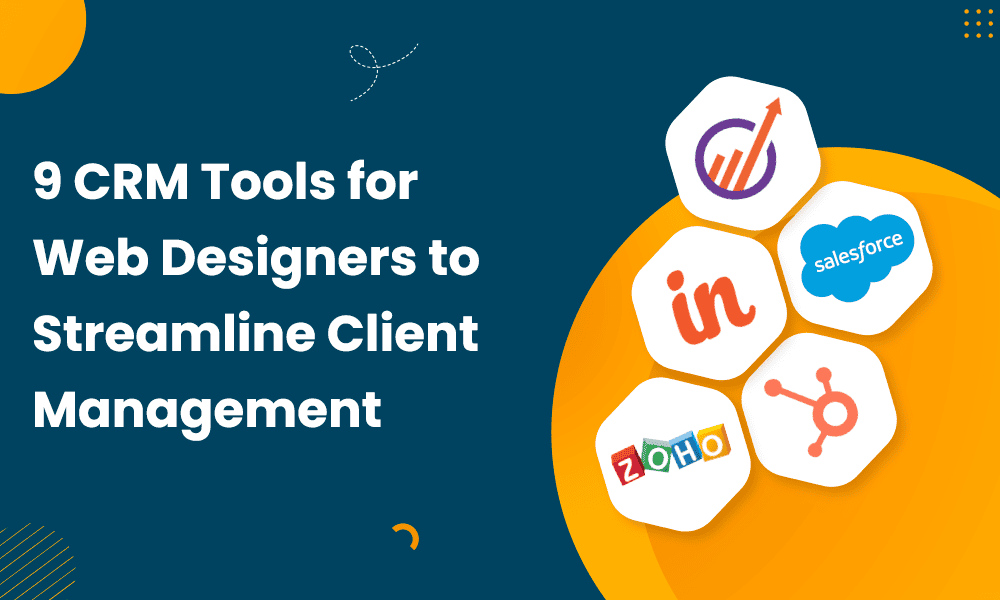
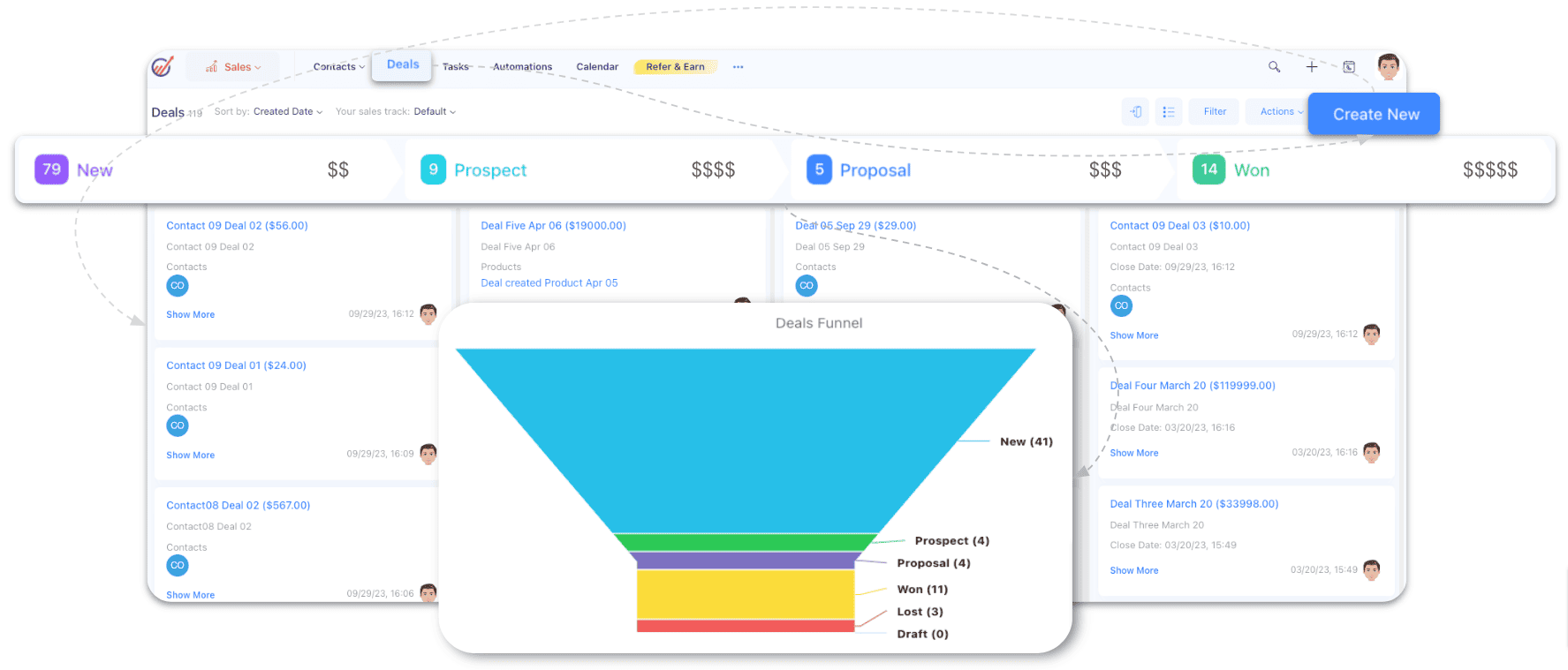
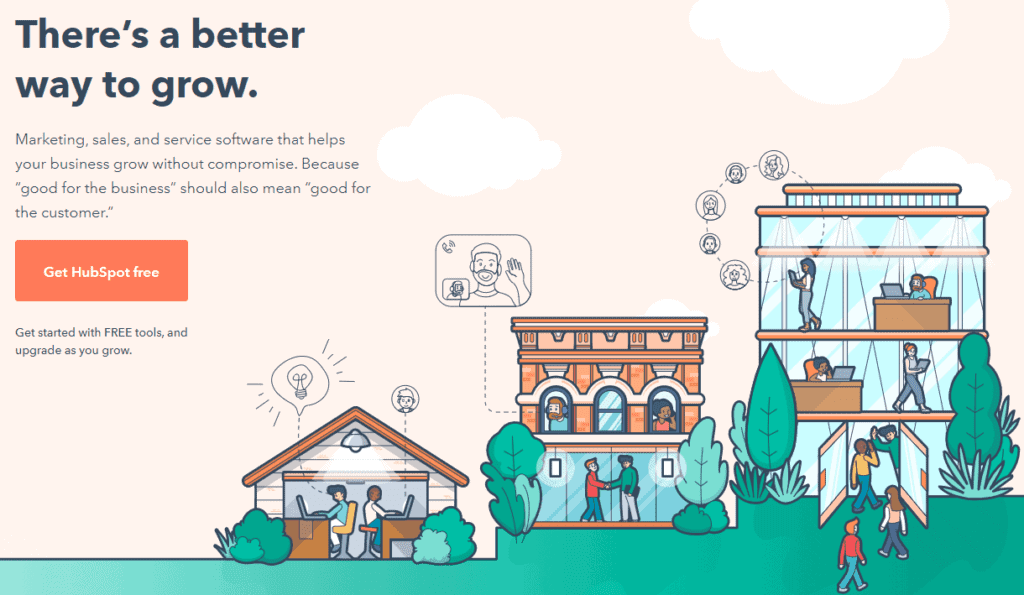
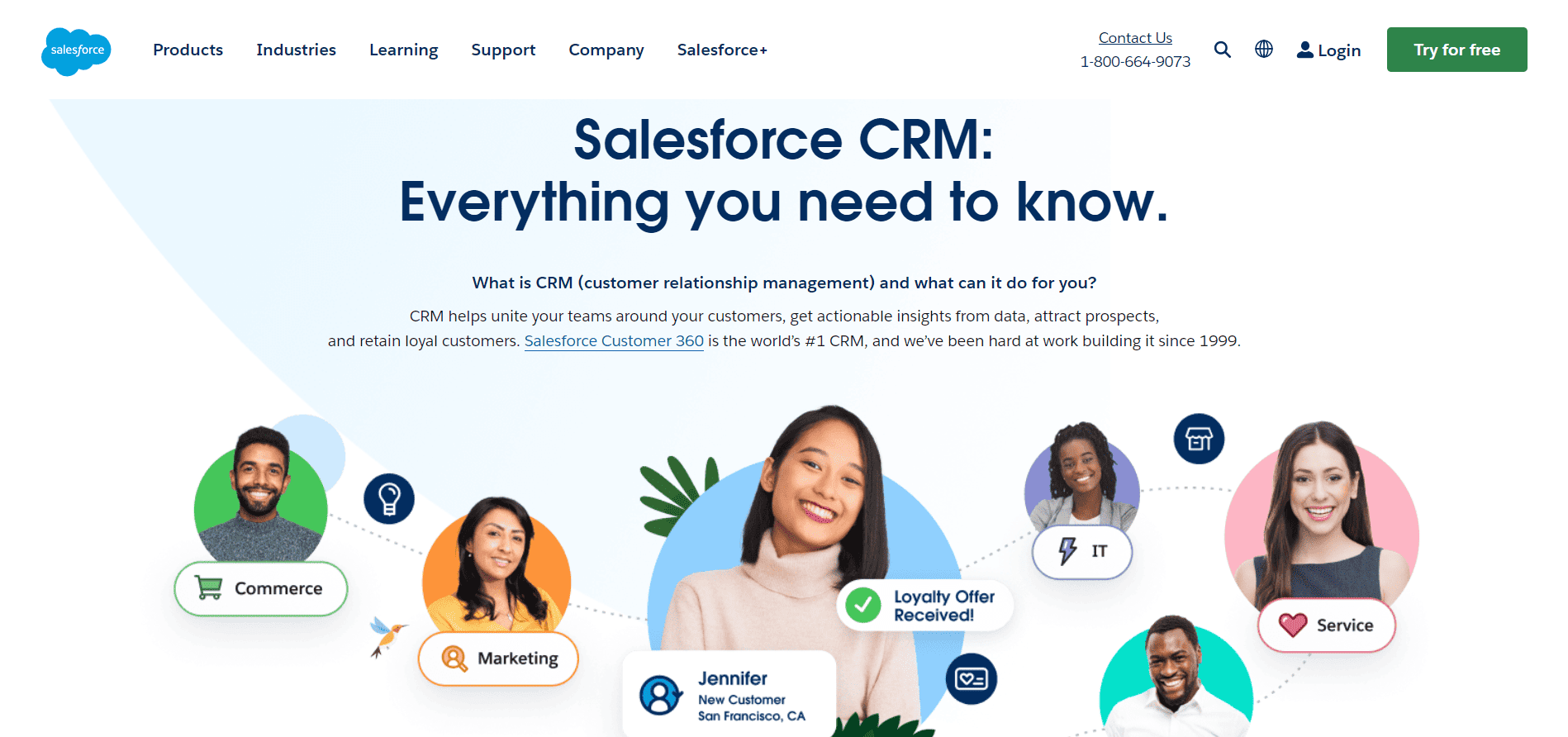




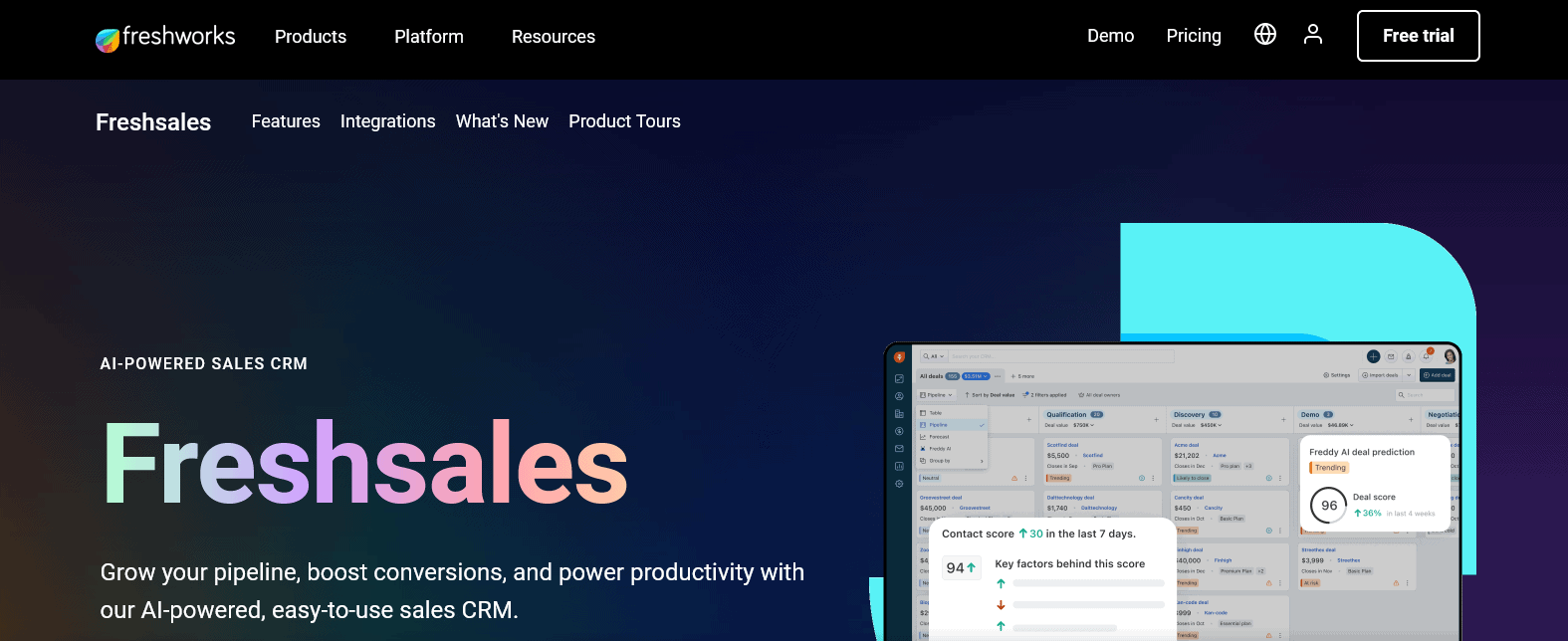

In the hands of talented web designers, every pixel has a purpose, contributing to a cohesive and engaging user experience. Their meticulous attention to detail and dedication to excellence ensure that every element of a website works harmoniously to enhance usability and aesthetics.
This blog couldn’t have come at a better time! As a web designer, I always struggle with client management. I’m excited to explore these CRM tools you’ve shared. Which CRM tool from your list has been the most effective for you?
https://biteblueprint.com